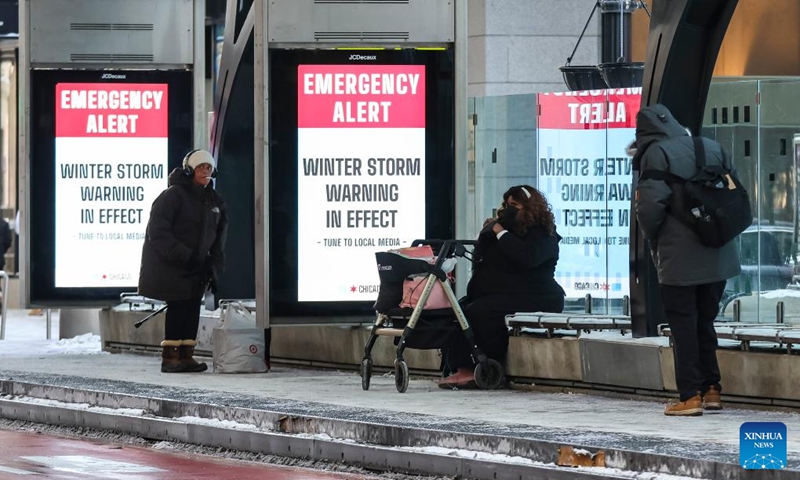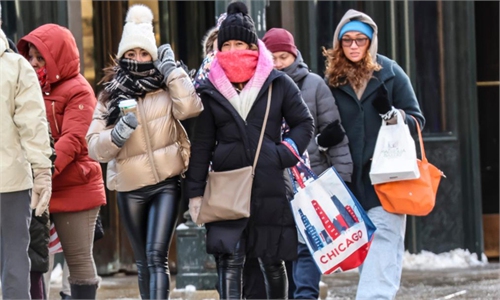
People wait for bus in Chicago, the United States, on Dec. 24, 2022. A strong winter storm swept through Chicago. (Photo by Joel Lerner/Xinhua)
The extreme cold weather hitting North America in the run-up to Christmas holidays is due to a phenomenon called a "bomb cyclone."
The US National Weather Service said this "once in a generation type event" has the power to turn deadly and is already breaking cold-weather records - with temperatures falling to -53 C in western Canada, -38 C in Minnesota and -13 C in Dallas.
It's even snowing in subtropical northern Florida.
A bomb cyclone, or bombogenesis, is a quickly intensifying storm that occurs when air pressure drops 20 millibars or more within 24 hours.
This usually happens when a warm air mass collides with a cold one, according to the National Oceanic and Atmospheric Administration.
This time air from the Arctic plowed into tropical air from the Gulf of Mexico, forming a depression bringing rain and snow.
What makes this storm extraordinary is just how fast the pressure dropped - 40 millibars in 24 hours, according to meteorologist Yann Amice of analysts Weather'n'co.
"This has led to the development of extreme storm conditions near the core of the low pressure system, with particularly harsh conditions," said Cyrille Duchesne, a meteorologist from the French Weather Channel.
The unprecedented nature of this storm comes from the intensity and extremity of its low temperatures, Duchesne said. "That's what makes it exceptional," he said.
The storm has sparked a "polar vortex plunge" where a particularly cold air mass from the Arctic heads south toward the lower, warmer latitudes.
The result is a vertiginous drop in temperatures - in Denver, for example, temperatures dropped 33 C in barely seven hours.
Combined with blizzards and snow, the wind chill in regions like the Great Plains can make the temperature feel like -55 C.

